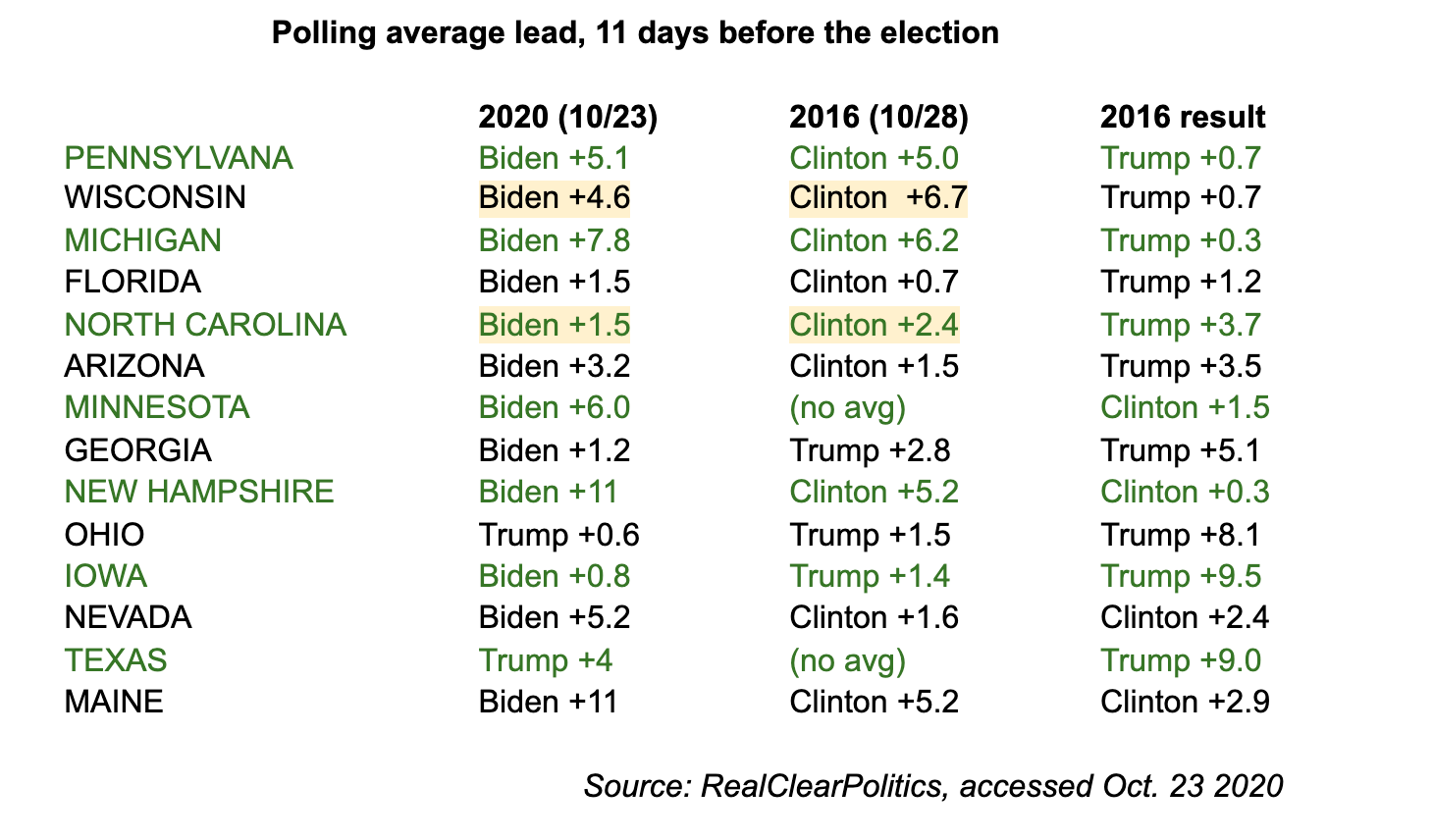Joe Biden’s lead in several key swing states isn’t that much more commanding than Hillary Clinton’s lead was at this late point in the 2016 presidential race, a sign that the race could be closer than some analysts believe.
Many commentators and analysts have argued that the former vice president and Democratic presidential nominee’s commanding lead in national polls, which is much larger than Clinton’s was, puts him in a much more favorable position than she was in.
Biden is currently 7.9% ahead of Trump, according to the RealClearPolitics average of national polls. At the same point in 2016, 11 days before Election Day, Clinton’s lead was 4.6%.
But because the president is elected based on Electoral College results and not the national popular vote, state results are what matter. And in many swing state polls, Biden is not dramatically out-performing where Clinton was in 2016 — and in some cases, is polling slightly behind where she was with 11 days to go.
Biden is on par with where Clinton was 11 days out in RealClearPolitics averages: He is up 5.1% to her 5% in Pennsylvania. He’s slightly ahead of where she was in Michigan (7.8% to her 6.2%) and Florida (1.5% to her 0.7%), and nearly two points ahead of where she was in Arizona (3.2% to her 1.5%).
But Biden is slightly behind Clinton’s 11-day-out position in Wisconsin (4.6% vs. 6.7%) and in North Carolina (1.5% to her 2.4%).
Trump won all six of those six states in 2016 despite Clinton having polling leads for much of the election — leading to sweeping distrust of the polls. With Biden not far off from her position then, the possibility remains that the same could happen this year.

To be sure, the fact that Biden is polling ahead of Trump at all is good news for the Democratic presidential nominee and bad news for Trump.
Other factors suggest that raw polling average numbers are not so easily comparable to 2016.
The 2016 race was much more volatile polling-wise than the 2020 race. This year, Biden has consistently led Trump in both national and state polls.
Biden is also in a much better position than Clinton in many other states — including having a slight 1.2% lead in Georgia, which Trump led by 2.8% at this point in 2016 — suggesting that national voter trends could be tilting certain types of voters toward Trump across the country, swing state or not.
And finally, pollsters in 2016 claim to have adjusted and corrected their methodologies and weighing systems in order to reflect the expected electorate more accurately. Many state polls in 2016 did not adequately weigh responses based on voter education. College-educated voters are far more likely to support Biden and to answer telephone polls, so, without proper weighting, the result can get skewed toward the Democratic presidential nominee as it did with Clinton in 2016.
Another polling average with a different methodology shows Biden with much larger leads. The New York Times projects that even if state polls are as wrong as they were in 2016, Biden is still on track to win the Electoral College with 280 votes.

